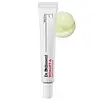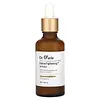What's inside
What's inside
 Key Ingredients
Key Ingredients

 Benefits
Benefits

 Concerns
Concerns

 Ingredients Side-by-side
Ingredients Side-by-side

Water
Skin ConditioningCetyl Ethylhexanoate
EmollientGlycerin
HumectantCarthamus Tinctorius Seed Oil
MaskingSqualane
EmollientBrassica Campestris Sterols
EmollientButyrospermum Parkii Butter
Skin ConditioningCholesterol
EmollientPhytosteryl/Behenyl/Octyldodecyl Lauroyl Glutamate
Skin Conditioning1,2-Hexanediol
Skin ConditioningPolyglyceryl-10 Oleate
Skin ConditioningHydrogenated Lecithin
EmulsifyingSodium Hyaluronate
HumectantPolyglutamic Acid
Skin ConditioningCeramide NP
Skin ConditioningStearic Acid
CleansingTocopherol
AntioxidantOleic Acid
EmollientRetinal
Skin ConditioningAdenosine
Skin ConditioningDisodium EDTA
Water, Cetyl Ethylhexanoate, Glycerin, Carthamus Tinctorius Seed Oil, Squalane, Brassica Campestris Sterols, Butyrospermum Parkii Butter, Cholesterol, Phytosteryl/Behenyl/Octyldodecyl Lauroyl Glutamate, 1,2-Hexanediol, Polyglyceryl-10 Oleate, Hydrogenated Lecithin, Sodium Hyaluronate, Polyglutamic Acid, Ceramide NP, Stearic Acid, Tocopherol, Oleic Acid, Retinal, Adenosine, Disodium EDTA
Water
Skin ConditioningButylene Glycol
HumectantHydrogenated Poly(C6-14 Olefin)
EmollientBehenyl Alcohol
EmollientHydrogenated Vegetable Oil
EmollientCetearyl Alcohol
EmollientStearic Acid
CleansingNiacinamide
Smoothing1,2-Hexanediol
Skin ConditioningSodium Hyaluronate
HumectantEthylhexylglycerin
Skin ConditioningCetyl Ethylhexanoate
EmollientPentaerythrityl Tetraethylhexanoate
EmollientDimethyl Isosorbide
SolventHydroxypinacolone Retinoate
Skin ConditioningGlyceryl Stearate
EmollientPolyglyceryl-3 Methylglucose Distearate
EmulsifyingDimethicone
EmollientChamomilla Recutita Flower/Leaf Extract
AntimicrobialBetaine
HumectantCamellia Sinensis Leaf Extract
AntimicrobialHamamelis Virginiana Leaf Extract
Skin ConditioningCentella Asiatica Extract
CleansingButylene Glycol Palmitate
EmollientGlycerin
HumectantHydrolyzed Glycosaminoglycans
HumectantCarbomer
Emulsion StabilisingParfum
MaskingAdenosine
Skin ConditioningDisodium EDTA
Tromethamine
BufferingDipotassium Glycyrrhizate
HumectantAllantoin
Skin ConditioningTocopherol
AntioxidantWater, Butylene Glycol, Hydrogenated Poly(C6-14 Olefin), Behenyl Alcohol, Hydrogenated Vegetable Oil, Cetearyl Alcohol, Stearic Acid, Niacinamide, 1,2-Hexanediol, Sodium Hyaluronate, Ethylhexylglycerin, Cetyl Ethylhexanoate, Pentaerythrityl Tetraethylhexanoate, Dimethyl Isosorbide, Hydroxypinacolone Retinoate, Glyceryl Stearate, Polyglyceryl-3 Methylglucose Distearate, Dimethicone, Chamomilla Recutita Flower/Leaf Extract, Betaine, Camellia Sinensis Leaf Extract, Hamamelis Virginiana Leaf Extract, Centella Asiatica Extract, Butylene Glycol Palmitate, Glycerin, Hydrolyzed Glycosaminoglycans, Carbomer, Parfum, Adenosine, Disodium EDTA, Tromethamine, Dipotassium Glycyrrhizate, Allantoin, Tocopherol
Ingredients Explained
These ingredients are found in both products.
Ingredients higher up in an ingredient list are typically present in a larger amount.
1,2-Hexanediol is a synthetic liquid and another multi-functional powerhouse.
It is a:
- Humectant, drawing moisture into the skin
- Emollient, helping to soften skin
- Solvent, dispersing and stabilizing formulas
- Preservative booster, enhancing the antimicrobial activity of other preservatives
Adenosine is in every living organism. It is one of four components in nucleic acids that helps store our DNA.
Adenosine has many benefits when used. These benefits include hydrating the skin, smoothing skin, and reducing wrinkles. Once applied, adenosine increases collagen production. It also helps with improving firmness and tissue repair.
Studies have found adenosine may also help with wound healing.
In skincare products, Adenosine is usually derived from yeast.
Learn more about AdenosineCetyl Ethylhexanoate is an emollient ester. It comes from cetearyl alcohol and 2-ethylhexanoic acid.
Cetyl Ethylhexanoate is an emollient that adds a velvety feel to skin without being greasy or oily. Emollients help trap moisture into your skin, keeping your skin soft and hydrated.
Disodium EDTA plays a role in making products more stable by aiding other preservatives.
It is a chelating agent, meaning it neutralizes metal ions that may be found in a product.
Disodium EDTA is a salt of edetic acid and is found to be safe in cosmetic ingredients.
Learn more about Disodium EDTAGlycerin is already naturally found in your skin. It helps moisturize and protect your skin.
A study from 2016 found glycerin to be more effective as a humectant than AHAs and hyaluronic acid.
As a humectant, it helps the skin stay hydrated by pulling moisture to your skin. The low molecular weight of glycerin allows it to pull moisture into the deeper layers of your skin.
Hydrated skin improves your skin barrier; Your skin barrier helps protect against irritants and bacteria.
Glycerin has also been found to have antimicrobial and antiviral properties. Due to these properties, glycerin is often used in wound and burn treatments.
In cosmetics, glycerin is usually derived from plants such as soybean or palm. However, it can also be sourced from animals, such as tallow or animal fat.
This ingredient is organic, colorless, odorless, and non-toxic.
Glycerin is the name for this ingredient in American English. British English uses Glycerol/Glycerine.
Learn more about GlycerinSodium Hyaluronate is hyaluronic acid's salt form. It is commonly derived from the sodium salt of hyaluronic acid.
Like hyaluronic acid, it is great at holding water and acts as a humectant. This makes it a great skin hydrating ingredient.
Sodium Hyaluronate is naturally occurring in our bodies and is mostly found in eye fluid and joints.
These are some other common types of Hyaluronic Acid:
Learn more about Sodium HyaluronateStearic Acid is a fatty acid. It is an emollient, emulsifier, and texture enhancer.
As an emollient, stearic acid helps soften skin. It aids the skin's protective barrier by preventing water loss. It also provides a gentle cleansing effect without stripping away natural oils.
Stearic acid may also be used to enhance the texture of products. It can add volume and stabilize ingredients such as water and oil. This can help water and oil ingredients from separating.
Sources of stearic acid include animal or vegetable fats/oils such as coconut or shea. It can be naturally found in butter, cocoa butter, shea butter, vegetable fats, and animal tallow.
This ingredient may not be Malassezia folliculitis, or fungal-acne safe.
Learn more about Stearic AcidTocopherol (also known as Vitamin E) is a common antioxidant used to help protect the skin from free-radicals and strengthen the skin barrier. It's also fat soluble - this means our skin is great at absorbing it.
Vitamin E also helps keep your natural skin lipids healthy. Your lipid skin barrier naturally consists of lipids, ceramides, and fatty acids. Vitamin E offers extra protection for your skin’s lipid barrier, keeping your skin healthy and nourished.
Another benefit is a bit of UV protection. Vitamin E helps reduce the damage caused by UVB rays. (It should not replace your sunscreen). Combining it with Vitamin C can decrease sunburned cells and hyperpigmentation after UV exposure.
You might have noticed Vitamin E + C often paired together. This is because it is great at stabilizing Vitamin C. Using the two together helps increase the effectiveness of both ingredients.
There are often claims that Vitamin E can reduce/prevent scarring, but these claims haven't been confirmed by scientific research.
Learn more about TocopherolWater. It's the most common cosmetic ingredient of all. You'll usually see it at the top of ingredient lists, meaning that it makes up the largest part of the product.
So why is it so popular? Water most often acts as a solvent - this means that it helps dissolve other ingredients into the formulation.
You'll also recognize water as that liquid we all need to stay alive. If you see this, drink a glass of water. Stay hydrated!
Learn more about Water